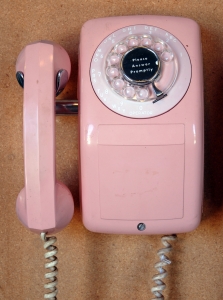What Does a Trademark Really Mean? Truth on the Horizon
 Trademarks are tricky things. Everyone recognizes them when they see them. Who doesn’t know what the Golden Arches are? Who doesn’t think to themselves, “I’m Lovin’ It”? But did you ever think about why? What do arches really have to do with hamburgers? For that matter, what does a Coke have to do with a smile, or a sneaker with a swish? What does the Mercedes Benz emblem really have to do with a car? That is the key, the safety, and the difficulty involved in a good trademark, all wrapped up into one. And, if you get it right, your business, any business, can make sure it comes to mind every time someone sees its symbol or hears its song, and that’s priceless.
Trademarks are tricky things. Everyone recognizes them when they see them. Who doesn’t know what the Golden Arches are? Who doesn’t think to themselves, “I’m Lovin’ It”? But did you ever think about why? What do arches really have to do with hamburgers? For that matter, what does a Coke have to do with a smile, or a sneaker with a swish? What does the Mercedes Benz emblem really have to do with a car? That is the key, the safety, and the difficulty involved in a good trademark, all wrapped up into one. And, if you get it right, your business, any business, can make sure it comes to mind every time someone sees its symbol or hears its song, and that’s priceless.
We previously wrote about Verizon Communications’ deal to buy out Vodafone’s minority stake in Verizon Wireless. That was a deal a long time in the making, in which Vodafone got its asking price even though Verizon Communications seemingly had the better bargaining position. Though Verizon might have overplayed its hand and negotiated itself out of several billion dollars in the process, it definitely got one thing right: its name.
Did you ever wonder where the name “Verizon” came from? Today it’s ubiquitous and everyone knows it’s a communications company. Though landline copper wired phones seem to be going the way of the payphone (does anyone else remember when payphones used to be on almost every corner?) Verizon Wireless is the country’s largest cellphone service provider and Verizon FiOs is a growing cable and internet service provider which provides significant competition to traditional cable companies in many areas, including here in New York. Its name and logo have become, to many, synonymous with communications.
 New York Business Lawyer Blog
New York Business Lawyer Blog


 A well thought out business plan should ensure steady, profitable growth by providing goods or services that customers want and can rely upon. One way to achieve this is through brand loyalty, which some would argue is the key to success. If you want to be around in ten years, chances are you will have to convince buyers that your product or service, whatever it might be, is worth having, recommending, and coming back to. Any business owner can tell you the benefits of purchasing what she’s selling; dependable, reliable, high quality, less expensive, value-driven; there are many ways to describe how good her product is. Getting this point across to your potential customers, however, can be difficult. One often overlooked way to convince them of the quality of your product is through a trademark or service mark, which, if done right, will easily identify your product or service. To show you just how important a trademark is, one of this country’s favorite companies, Apple, is back in the news because it is trying to trademark the name of what might become the next must-buy piece of personal electronics.
A well thought out business plan should ensure steady, profitable growth by providing goods or services that customers want and can rely upon. One way to achieve this is through brand loyalty, which some would argue is the key to success. If you want to be around in ten years, chances are you will have to convince buyers that your product or service, whatever it might be, is worth having, recommending, and coming back to. Any business owner can tell you the benefits of purchasing what she’s selling; dependable, reliable, high quality, less expensive, value-driven; there are many ways to describe how good her product is. Getting this point across to your potential customers, however, can be difficult. One often overlooked way to convince them of the quality of your product is through a trademark or service mark, which, if done right, will easily identify your product or service. To show you just how important a trademark is, one of this country’s favorite companies, Apple, is back in the news because it is trying to trademark the name of what might become the next must-buy piece of personal electronics.